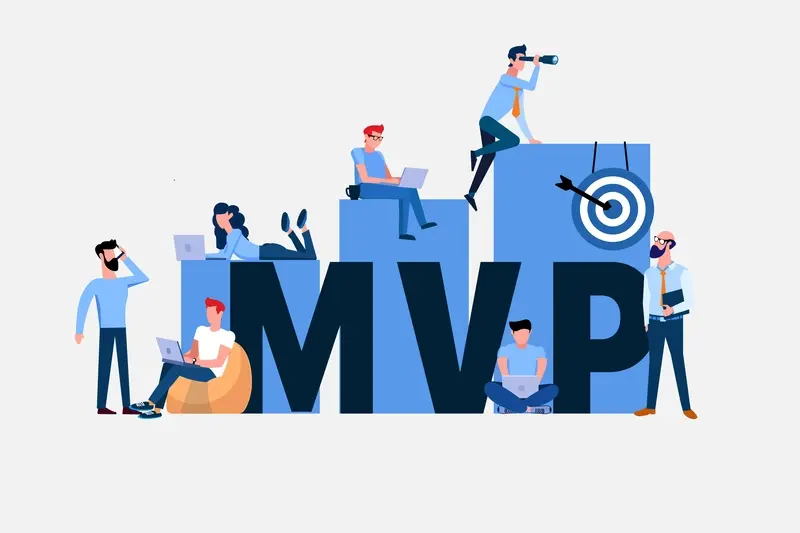How Long Does It Take To Convert My Website Into a PWA?
The average progressive web app conversion takes anywhere from 2 weeks to 6 months—that's a huge range, and it's exactly why so many business owners get frustrated with the development time question. One minute they're told it'll be a quick job, the next they're looking at months of work and wondering what went wrong.
I've converted everything from simple brochure websites to complex e-commerce platforms, and the timeline depends on far more factors than most people realise. Your current website's structure, the features you want to add, and how much customisation you need all play a massive role in determining how long the website migration will take.
The biggest mistake I see is when businesses assume their website conversion will be straightforward, only to discover halfway through that their existing code needs significant restructuring to work properly as a PWA
The good news? Once you understand what affects development time, you can make informed decisions about your conversion project. Whether you're looking at a simple transformation or a complete overhaul, knowing what to expect upfront will save you time, money, and a lot of headaches down the road. Let's break down everything you need to know about progressive web app conversion timelines.
What Is a Progressive Web App?
A Progressive Web App—or PWA as most people call it—is basically a website that acts like a mobile app. I know that sounds confusing at first, but stick with me. When you visit a PWA on your phone, it looks and feels just like any other app you'd download from the App Store or Google Play. The clever bit is that it's actually running in your web browser, not as a separate app.
PWAs can do loads of things that regular websites can't. They work offline, send push notifications, and you can even add them to your home screen without going through an app store. They're fast, responsive, and honestly, most users can't tell the difference between a PWA and a native app.
The Technical Bits Made Simple
Behind the scenes, PWAs use something called a service worker—think of it as a helpful assistant that runs in the background. This assistant caches important files so your app works even when there's no internet connection. PWAs also need a web app manifest file, which tells your phone how to display the app when it's added to your home screen.
The beauty of PWAs is that they bridge the gap between websites and mobile apps. You get the best of both worlds without the hassle of app store submissions or the cost of building separate native apps.
Factors That Affect Development Time
When clients ask me about progressive web app development time, I always tell them the same thing—it depends entirely on what you're starting with. A simple brochure website with a few pages? That's going to convert much faster than a complex e-commerce platform with user accounts, payment systems, and inventory management.
The biggest factor is your website's current architecture. If you've built your site using modern JavaScript frameworks like React or Vue.js, you're already halfway there. These frameworks make the conversion process much smoother because they're designed with PWA capabilities in mind. But if you're working with an older WordPress site or custom PHP build, expect the timeline to stretch considerably.
Key Factors That Impact Timeline
- Current website technology and framework
- Number of pages and features to convert
- Offline functionality requirements
- Push notification complexity
- Third-party integrations and APIs
- Database restructuring needs
- Design modifications for mobile-first approach
Your team's experience with PWA development plays a huge role too. I've seen projects that should take weeks drag on for months simply because the developers were learning as they went. Website migration isn't just about copying content—it's about rethinking how your application works at its core.
Start by auditing your current website's performance and identifying which features are most important for your PWA. This will help you prioritise development tasks and potentially reduce overall timeline.
Simple Website Conversions: The Quick Wins
Let's talk about the websites that make my job easy—the ones that convert to PWAs without breaking a sweat. These are typically straightforward sites with clean code, modern frameworks, and simple functionality. Think brochure websites, basic e-commerce stores, or portfolio sites that don't rely on complex server interactions.
If your website ticks most of these boxes, you're looking at a conversion timeframe of just 2-4 weeks. That's music to any business owner's ears! The secret lies in having a solid foundation to build upon.
What Makes a Website PWA-Ready?
Some websites are practically begging to become PWAs. They've got responsive design down pat, they're already using HTTPS, and their codebase isn't held together with digital sticky tape. These sites usually have straightforward navigation, minimal third-party integrations, and content that loads predictably.
The conversion process becomes streamlined when we don't need to fix underlying issues first. We can focus on adding the PWA magic—service workers, web app manifest, and offline functionality—without wrestling with legacy code or compatibility problems.
The Quick Win Checklist
- Modern, responsive design that works across all devices
- Clean, well-structured HTML and CSS code
- Minimal reliance on complex plugins or third-party tools
- Basic functionality that doesn't require heavy server processing
- Already using HTTPS security protocols
- Fast loading times and optimised images
When your website meets these criteria, the PWA conversion becomes less about rebuilding and more about enhancing what already works well.
Complex Website Conversions: When Things Get Tricky
Not every progressive web app conversion is straightforward—some websites throw curveballs that can extend your development time significantly. I've worked on conversions where what looked like a simple job turned into a months-long project because of hidden complexities.
Third-Party Dependencies
The biggest headache? Legacy third-party integrations that weren't built with PWAs in mind. Payment systems, customer relationship management tools, and analytics platforms can all cause problems during website migration. These systems often need rebuilding or replacing entirely, which adds weeks to your timeline.
Custom Features and Functionality
Complex user authentication systems, real-time data synchronisation, and custom-built features require careful planning. You can't just copy and paste these elements—they need to be rebuilt to work properly in a progressive web app environment.
We had a client with a booking system that seemed simple on the surface, but it had over 200 custom rules running in the background. Converting that took three times longer than expected.
Database migrations present another challenge, especially when dealing with large amounts of user data or complex relationships between different data types. The good news is that experienced developers can spot these issues early and plan accordingly, but it does mean your development time will be longer than a basic conversion.
The Step-by-Step Conversion Process
Right, let's break down what actually happens when we convert your website into a PWA. I've done this conversion process countless times now and whilst every project is different, the core steps remain pretty much the same.
Phase One: Foundation Work
We start by auditing your existing website—checking what's already mobile-friendly and what needs work. This includes reviewing your responsive design, load times, and any existing JavaScript frameworks. Then we create the service worker file (the bit that makes your PWA work offline) and set up the web app manifest. That's the file that tells browsers your site can behave like a native app.
Phase Two: Enhancement and Testing
Next comes the fun part—adding PWA features like push notifications, offline functionality, and the "Add to Home Screen" prompt. We'll also implement caching strategies so your app loads quickly even on slow connections. The final step involves rigorous testing across different devices and browsers; PWAs can be a bit finicky sometimes!
- Initial website audit and compatibility check
- Service worker development and implementation
- Web app manifest creation and configuration
- Offline functionality setup
- Push notification integration (if required)
- Performance optimisation and caching
- Cross-browser and device testing
- Final deployment and monitoring
The whole process typically takes between 2-8 weeks depending on complexity, but you'll have a functioning PWA that your users can install and use just like a native app.
Common Delays and How to Avoid Them
After years of handling progressive web app conversions, I can tell you that certain delays pop up again and again. The good news? Most of them are completely avoidable if you know what to look for.
The biggest delay I see comes from trying to convert everything at once. Teams get excited about their new PWA and want to migrate their entire website in one go. This sounds logical, but it's a recipe for disaster. Instead, pick your most important pages first—usually the homepage, product pages, and checkout flow. Get these working perfectly before moving on to the rest.
Service Worker Troubles
Service workers are the brain of your PWA, but they're also where things go wrong most often. The problem isn't that they're difficult to write; it's that they're tricky to test properly. You need to check how they behave when users are offline, when they're on slow connections, and when updates are available. Miss any of these scenarios and your development time will stretch out significantly.
Icon and Manifest Issues
Don't underestimate the time needed for app icons and manifest files. Different devices need different icon sizes, and getting the manifest configuration right affects how your PWA appears when users install it. Plan for this early in your website migration process.
Test your PWA on actual devices, not just in your browser's developer tools. Real-world testing catches issues that desktop testing misses.
Conclusion
Converting your website into a PWA isn't something you can put an exact timeframe on—I've learnt that the hard way over the years! Simple websites with basic functionality can be transformed in just a few weeks, whilst complex sites with lots of features and integrations might take several months. The key is understanding what you're working with from the start.
Your timeline will depend on your website's complexity, the features you want to include, and how much testing you're willing to do. Don't rush the process; a poorly converted PWA will frustrate your users more than having no PWA at all. Take time to plan properly, test thoroughly, and make sure your service workers are rock solid.
The good news is that PWAs are getting easier to build, and the benefits are worth the effort. Your users will get a faster, more reliable experience that works offline—and that's something that can really set you apart from the competition. Start with the basics, get them right, then add the fancy features later. Trust me, your future self will thank you for taking this approach rather than trying to do everything at once.
Share this
Subscribe To Our Learning Centre
You May Also Like
These Related Guides

How Do I Know If a PWA Is Right for My Business?

Should I Build My MVP as a Native App or Web App?



